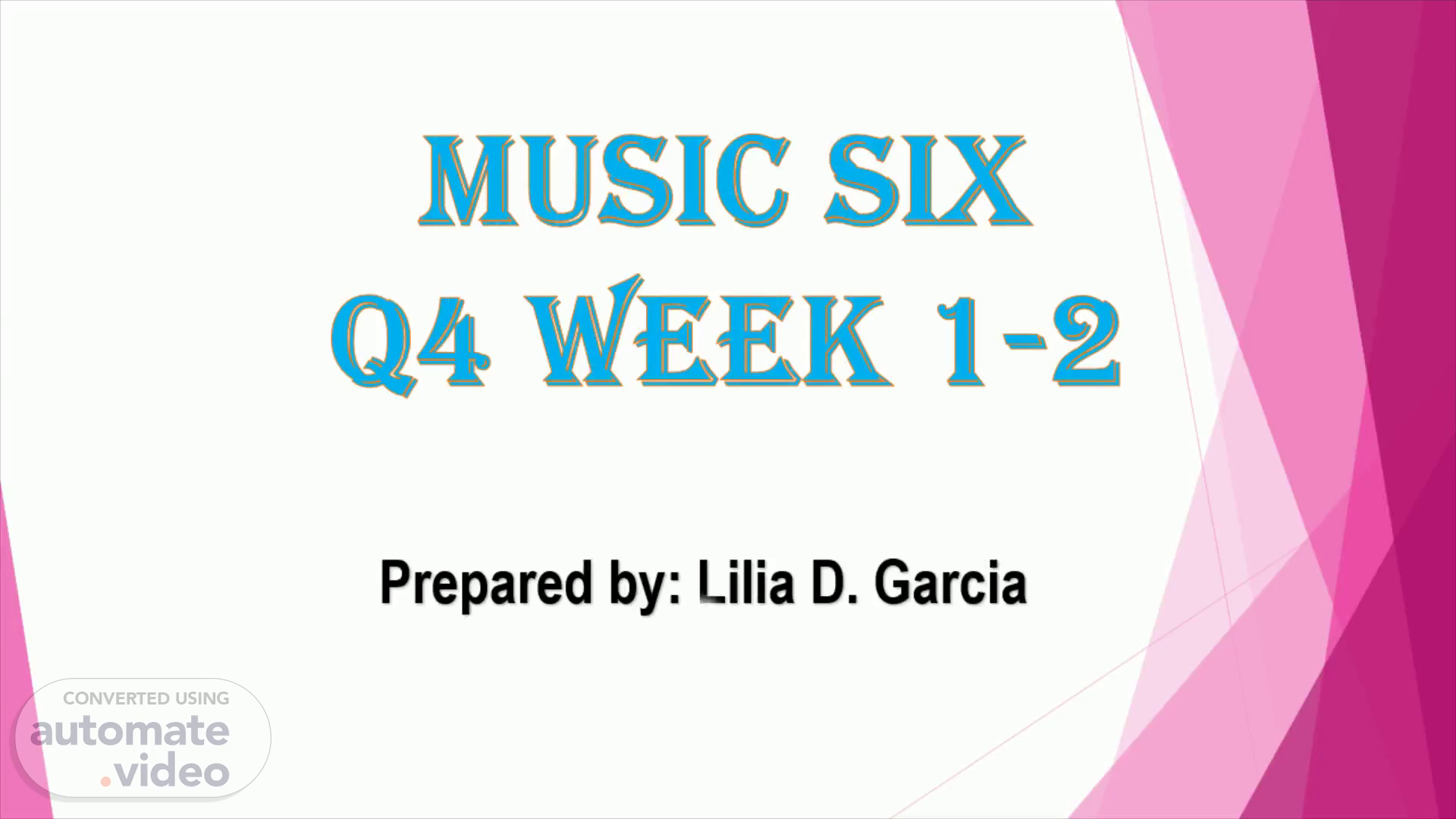
PowerPoint Presentation
Scene 1 (0s)
Music SIX Q4 WEEK 1-2. Prepared by: Lilia D. Garcia.
Scene 2 (16s)
Identify the different tempo in music and the different tempo marks in a song from the community S6ES-Iva-1.
Scene 3 (31s)
REMINDERS: Seat properly Listen Attentively Avoid doing unnecessary things while listening Be ready with your notebook and ballpen ..
Scene 4 (56s)
REVIEW : Identify the following according to their classification Write S – String, B-Brass, W-Woodwind and P-for Percussion before each number . ______ 1. Trumpet _____ 4. Triangle ______ 2. Cello _____ 5. Harp ______ 3. Clarinet.
Scene 5 (2m 20s)
LET’S TRY: Study the pictures below Compare the movement of th e running horse to the movement of the running turtle. Which of them runs fast? Which of them runs slow? Why?.
Scene 6 (3m 15s)
How do you describe the flow of music ?. FAST SLOW AND MODERATE are examples of tempo in music..
Scene 7 (7m 5s)
Let’s Explore Tempo – comes from the Latin word tempus which means “time”. Below are the different tempo and their markings. Just like dy namics tempo terms are also written in Italian. However tempo markings can also be written in German, English, French and Filipino..
Scene 8 (7m 30s)
The tempo of a musical piece is usually indicated in the top of a musical score. This is called tempo marking. Tempo markings can be found anywhere in a piece depending on the composers desire to change the mood of the song. The different kinds of tempo marking are written in Italian..
Scene 9 (7m 56s)
TERM MEANING GRAVE Solemn, very slow LARGO Broad, very slow ADAGIO Slow, but not as slow as largo LENTO Slow ANDANTE Moderately slow ANDANTINO A little more faster than andante MODERATO At a moderate speed ALLEGRO Fast, lively and bright VIVACE Fast and lively PRESTO Very fast ACCELERANDO Gradually becoming faster RITARDANDO Gradually becoming slower A TEMPO Means to return to its original speed.
Scene 10 (8m 59s)
Sit-si—rit - sit sa-la-gin - ang - e bng gu-mi - ri'ypa-rang tan-dang. A -te-a-leng - tat pg - da-nng sa May - ni - Ia,.
Scene 11 (11m 45s)
ANSWERS: ALEGRO – fast, lively and bright ANDANTE – slow ACCELERANDO – gradually speeding up.
Scene 12 (12m 8s)
“PANDANGGUHAN” IDENTIFY AND WRITE DOWN THE TEMPO MARKINGS USED IN THE SONG..
Scene 13 (15m 2s)
ANSWERS: Vivace Moderato Accelerando Largo Alegro Ritardando.
Scene 14 (15m 26s)
LET’S ELABORATE Choose the correct answer inside the box to Complete each sentence. Very fast Tempo Largo Ritardando Andante Very Slow _______ is the rate of speed in music _______ indicates a gradual but continuous decrease in speed. Presto means _______ Andantino means a little faster than _______ Lento means _________.
Scene 15 (17m 1s)
EVALUATION: Direction: Identify the letter of the.
Scene 16 (18m 25s)
C. ____3. If you are going to compose a song with a slow tempo. Which of the following are you going to use? a. Lento c. Andante b . Largo d . Adagio ____ 4. What tempo are you going to use if you want the song to be fast and lively? a. Vivace c. Moderato b. A tempo d. Andantino.
Scene 17 (19m 31s)
____5. You want a tempo to return to the original speed of the piece. Which of the following are you going to use? a. Accelerando c. A tempo.
Scene 18 (20m 54s)
ASSIGNMENT: GIVE THE APPROPRIATE TEMPO OF THE FOLLOWING ACTIONS. A MAN WALKING - A RABBIT HOPPING - A SLOTH MOVING - A JET FLYING - A RUNNING HORSE -.